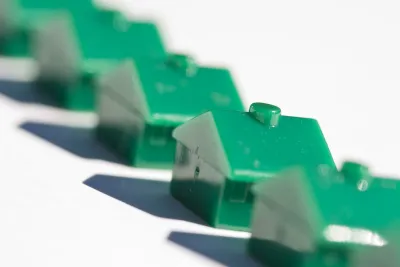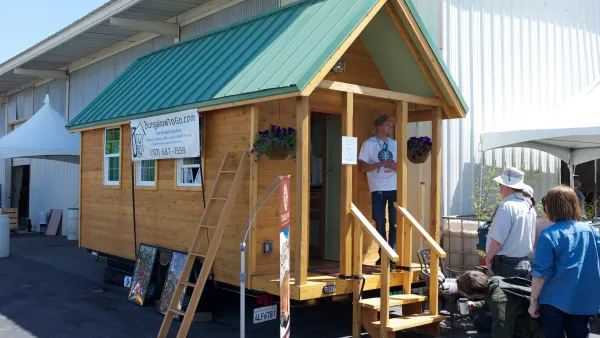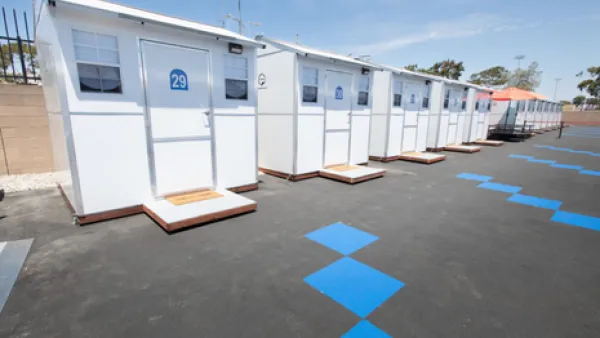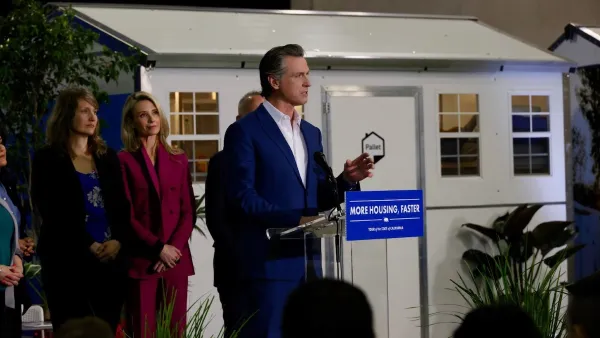While cities like New York and San Francisco consider ways to incentivize the development of micro apartments, a Northeast Washington neighborhood has become home to an experiment in small house production.

In an extreme reversal of America's pre-recession housing tastes, the McMansion seems to be going out of favor while the country's appetite for exceedingly small living spaces in urban areas seems to be growing. The latest incarnation of this trend can be found in the Northeast Washington D.C. neighborhood known as Stronghold, where "a cluster of what neighbors call 'those tiny people, building their tiny houses,' has appeared, reports Emily Wax. "The people aren’t really tiny, but their homes are — 150 to 200 square feet of living space, some with gabled roofs, others with bright cedar walls, compact bathrooms and cozy sleeping lofts that add up to living spaces that are smaller than the walk-in closets in a suburban McMansion."
"The group behind Stronghold’s tiny-house community calls itself Boneyard Studios," writes Wax. “'As property values and rents rise across the city, we want to showcase this potential option for affordable housing,' the group writes on its Web site. 'We decided to live the questions: Can we build and showcase a few tiny homes on wheels in a DC urban alley lot? . . . Not in the woods, but in a true community, connected to a neighborhood? Yes, we think. Watch out left coast, the DC adventure begins.'”
"There’s one problem: The city’s zoning laws don’t allow residential dwellings on alley lots unless they are a minimum of 30 feet wide, or roughly the width of a city street. D.C. is currently discussing lifting the 30-foot restriction. So, as Boneyard Studios continues to advocate more progressive zoning laws, it is using the property to showcase what could be."
FULL STORY: Home, squeezed home: Living in a 200-square-foot space

National Parks Layoffs Will Cause Communities to Lose Billions
Thousands of essential park workers were laid off this week, just before the busy spring break season.

Retro-silient?: America’s First “Eco-burb,” The Woodlands Turns 50
A master-planned community north of Houston offers lessons on green infrastructure and resilient design, but falls short of its founder’s lofty affordability and walkability goals.

Delivering for America Plan Will Downgrade Mail Service in at Least 49.5 Percent of Zip Codes
Republican and Democrat lawmakers criticize the plan for its disproportionate negative impact on rural communities.

Test News Post 1
This is a summary

Test News Headline 46
Test for the image on the front page.

Balancing Bombs and Butterflies: How the National Guard Protects a Rare Species
The National Guard at Fort Indiantown Gap uses GIS technology and land management strategies to balance military training with conservation efforts, ensuring the survival of the rare eastern regal fritillary butterfly.
Urban Design for Planners 1: Software Tools
This six-course series explores essential urban design concepts using open source software and equips planners with the tools they need to participate fully in the urban design process.
Planning for Universal Design
Learn the tools for implementing Universal Design in planning regulations.
EMC Planning Group, Inc.
Planetizen
Planetizen
Mpact (formerly Rail~Volution)
Great Falls Development Authority, Inc.
HUDs Office of Policy Development and Research
NYU Wagner Graduate School of Public Service





























